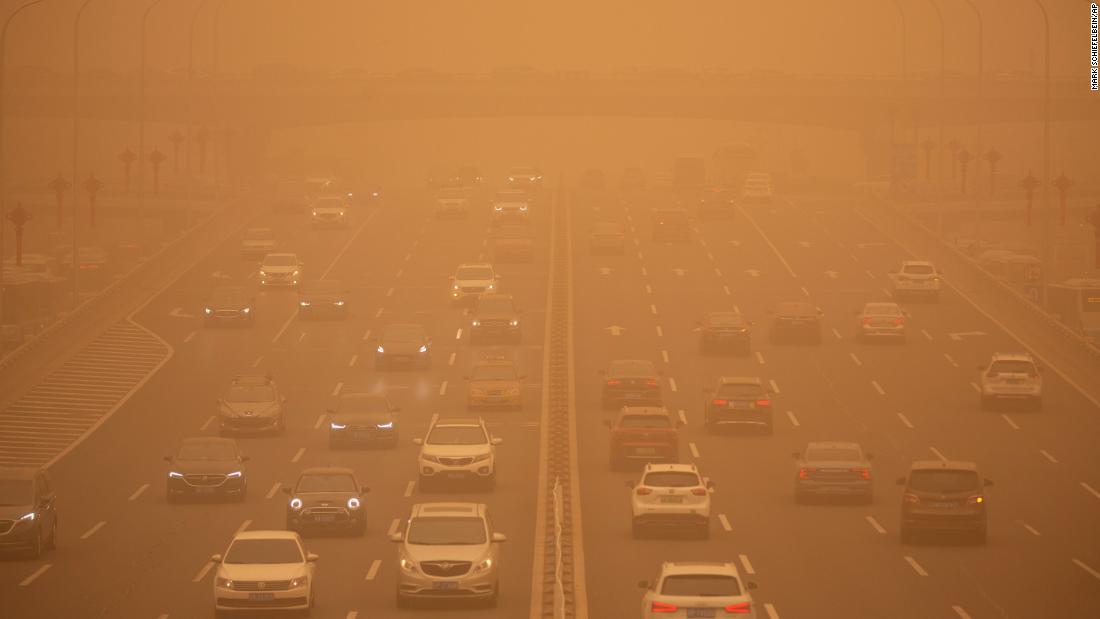Photos of Beijing, where 21.7 million residents live, show skyscrapers and cars shrouded in dense fog, with a “dangerous” rating of air quality indices and the authorities advising residents to stay indoors.
Many commuters, however, continued to fight the elements as they walked and cycled through strong sandy winds. In parts of the city, visibility was so poor that drivers had to turn on their headlights even in the middle of the day.
“In some places there are strong sandstorms with a visibility of less than 500 meters,” the China Meteorological Administration said in a statement on Monday. “It is also the strongest dust and sand weather that has hit China in almost ten years.”
The air quality in Beijing was already poor due to pollution. When the sandstorm hit, the city’s air quality dropped to dangerous levels, according to the World Air Quality Index.
The index measures the concentration of different pollutants in the air – the most important being PM 2.5. These harmful microscopic particles are smaller than 2.5 micrometers in diameter and are considered particularly dangerous because they can penetrate deep into the lungs and pass into other organs and the bloodstream.
Beijing on Monday measured a maximum of 655 micrograms per cubic meter. The World Health Organization considers anything above 25 to be unsafe.
From Mongolia, the sandstorm gradually moved south. According to the city’s environmental monitoring center, Beijing’s concentrations of the larger PM 10 particles exceeded 8100 micrograms per cubic meter, prompting the Central Meteorological Observatory to issue a yellow sandstorm warning – the second level in a four-level color-coded weather warning system.
Authorities advised the public not to go outside, and the Beijing Municipal Education Commission called on schools and education committees on Monday to suspend outdoor activities.
But sandstorms have meanwhile decreased dramatically; the annual number of sandstorm-stricken days in Beijing dropped from a peak of 26 in the 1950s to just three days after 2010, Xinhua reported.
Sandstorms also hit northern provinces of Hebei and Shanxi, western Gansu, and central and western Inner Mongolia. Xinhua said Monday. Other parts of the country, including northern Xinjiang, are seeing high gusts. The sandstorms are expected to last until Tuesday.
The meteorological government said Mongolia, which lies north of mainland China, is experiencing strong cyclones. The sand and dust of Mongolia moved eastward and southward across the northern regions of China, carried by the cold high pressure at the back of the cyclone.
